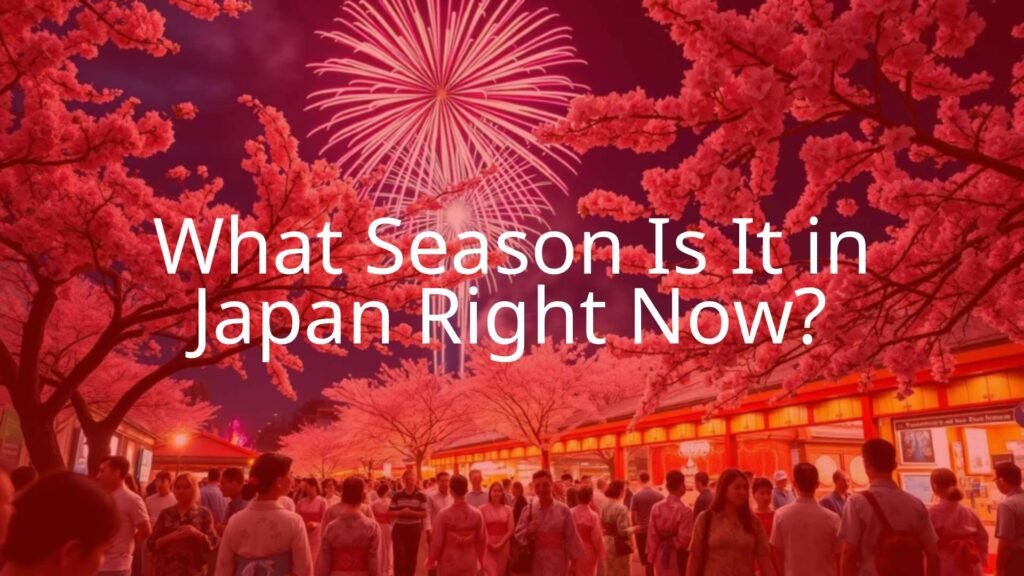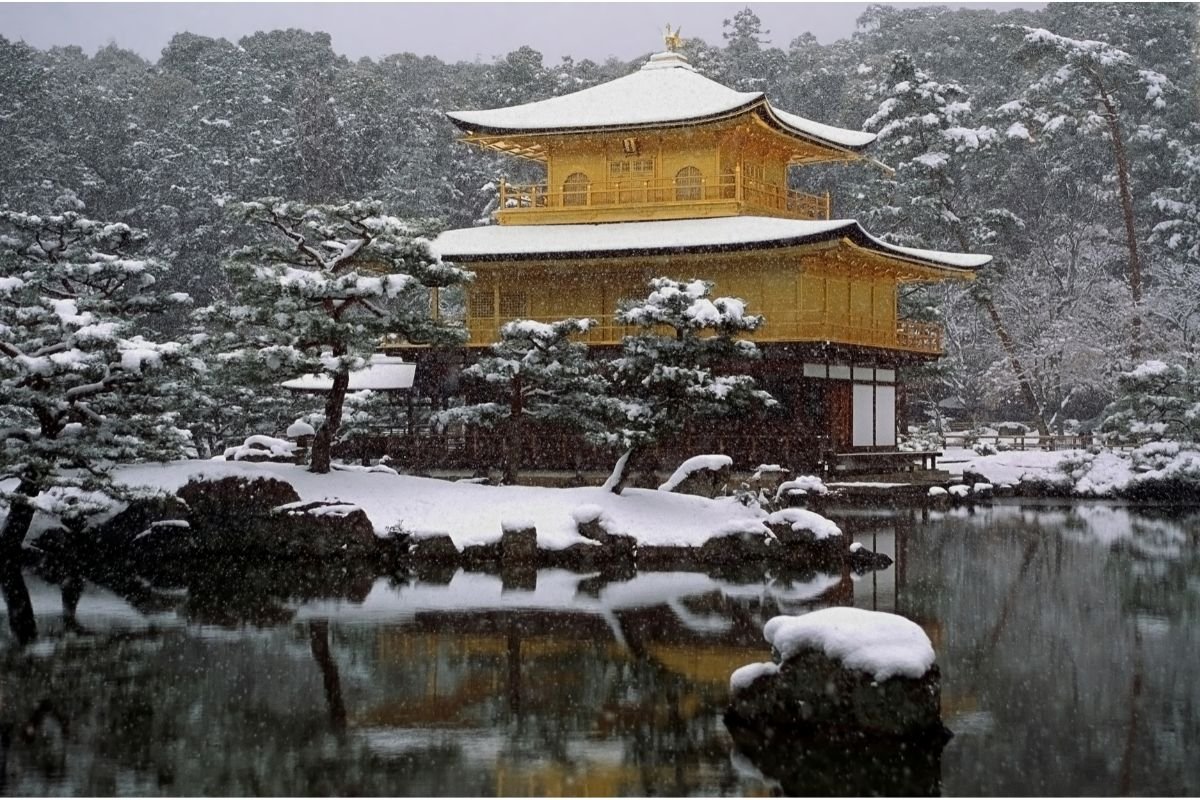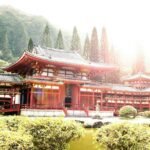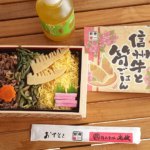As of July 2, 2025, Japan is in the midst of summer, which runs from June to August. During these months, the country experiences hotter temperatures, higher humidity, and the rainy season, called tsuyu, usually starts in June. While it can feel quite hot and sticky-especially in the middle regions-summer in Japan is known for lively festivals and impressive fireworks shows.
Japan stretches from north to south, so it has four clear seasons. Each one has its own special features: pink cherry blossoms in spring, bright fall leaves, snowy winters, and the busy, energetic summer full of events. Knowing when each season takes place helps with planning a trip to Japan, since weather, activities, and even local traditions change a lot during the year.

How Can You Tell What Season It Is in Japan by Month?
It’s easy to figure out what season it is in Japan by looking at the calendar months. Spring is from March to May-with milder weather and flowers blooming everywhere. Summer takes over from June to August, bringing warmth, humidity, and lots of outdoor events. Fall follows from September to November, when the air cools and the leaves put on a show of red and orange. Winter comes from December to February, often with snow in the north and good conditions for skiing and warm drinks.
While these dates are a good rule of thumb, seasons don&rsquot always start and end at exactly the same time everywhere in Japan. For example, cherry blossoms bloom earlier in the south and later in the north. Fall colors, too, appear in northern areas before moving down. But most of the time, you can trust these monthly guides when planning a trip.
| Season | Months | Main Features |
|---|---|---|
| Spring | March – May | Flowers blooming, mild weather, cherry blossoms |
| Summer | June – August | Hot, humid, festivals, fireworks, rainy period |
| Autumn | September – November | Cooler temperatures, colored leaves |
| Winter | December – February | Snow in the north, coldest months, winter sports |
Start and End Dates for Japan’s Four Seasons
Japan follows the regular meteorological calendar for seasons. Here is a simple breakdown:
- Spring: March to May-flowers bloom and the weather warms up
- Summer: June to August-the warmest and most humid stretch
- Autumn: September to November-temperatures drop and leaves change color
- Winter: December to February-the coldest time, often snowy in the north

These dates are a good guide, though temperatures and snow can last longer or come earlier in some regions, especially in the north or south. For most people, these ranges work well for planning.
The Four Seasons in Japan Explained
Japan is famous for its changing seasons, and each one is special in its own way. Unlike places where the weather only shifts a little, Japan’s seasons stand out, each bringing different weather, scenery, and celebrations. These changes shape daily life, holiday plans, the food you eat, and what people wear. From gentle spring to exciting summer, colorful autumn, and calm winter, there’s always something different to enjoy.
Spring (March to May)
Spring is considered one of the best times to visit Japan for good reasons. The weather is mild, nature wakes up after winter, and the famous cherry blossoms-known as sakura-cover cities and countryside in pink. The first flowers are usually plum blossoms, which are followed by sakura. In the south, cherry blossoms appear as early as January, while in the north, like Hokkaido, they might not bloom until May. Tokyo usually reaches full bloom between late March and early April. Other flowers like wisteria and tulips are also easy to find. Many people have picnics under the trees, called hanami. Be aware that Golden Week (late April to early May) is the busiest travel time for locals, as several holidays come at once.
Summer (June to August)
Summer begins with “tsuyu,” the rainy season, usually lasting three to four weeks from June. This is important for rice farming but also brings festivals and fewer crowds. After the rain ends, July and August get very hot and muggy, with temperatures often above 30°C (86°F). Beaches, rivers, and mountains are popular escapes. Many festivals and fireworks light up the evenings, with traditional song and dance bringing everyone together. Northern regions like Hokkaido are cooler and filled with flowers. Cities can be very hot, so light, loose clothing is best.
Autumn (September to November)
Autumn is another favorite time for both locals and visitors. The weather cools off after summer, and the changing leaves turn parks and hillsides into red, orange, and yellow displays. The best spots for fall colors change by region, starting in the north and reaching cities like Tokyo and Kyoto by October or November. The season also brings typhoons, especially in September and October, so keep an eye on the weather forecast. The air is crisp, making it great for walks, temple visits, and hot springs.
Winter (December to February)
Winter transforms much of Japan, especially the north, into a snowy landscape. Cold days and nights are common, especially in places like Hokkaido and Tohoku. Cities in the central and southern parts usually stay above freezing, but might get a rare light snow. Skiing and snowboarding are very popular, with large resorts in Hokkaido and Nagano. After a day outside, many people relax in hot springs or eat warming meals like nabe (Japanese stew). Bright illuminations and lights make cities look festive, but stores may close from late December to early January for the New Year holiday.

Seasonal and Regional Weather Differences
Japan covers a long stretch from north to south, so the seasons and the weather can vary a lot by region. This means different experiences from one area to another, so it’s smart to check local weather before your trip.
How Different Is the Weather Across Japan?
Japan has six main climate zones. Here’s a quick guide:
- Hokkaido (North): Cool summers, very cold and snowy winters. Hardly any rainy season. Snow boots and warm coats needed.
- Pacific Coast (Tokyo, Osaka, Chiba): Hot, humid summers with plenty of rain. Dry, sunny winters. Breathable clothes for summer and some layers for air conditioning.
- Sea of Japan Side (Akita, Niigata, Ishikawa): Warm summers, but winters have heavy snow and cold weather. Layer up, especially in autumn due to changing temperatures.
- Inland/Central Highlands (Gifu, Nagano, Yamanashi): Big differences in temperatures between seasons and between day and night. Light summer clothes and thick winter layers recommended.
- Seto Inland Sea (Hiroshima, Kagawa, Okayama): Mild weather most of the year, little rain, but winters can still be freezing. Bring a jacket for colder days.
- Nansei Islands (Okinawa): Warm all year, no snow, but rainy. Even winters can feel cool at night, so pack a light coat.

With such differences, your packing list should match your specific destination, not just the month.
Special Weather Periods in Japan
When Is the Rainy Season?
The rainy season usually runs from May to June (sometimes early July), depending on where you are in Japan. It starts in the south and moves north. Tokyo’s rainy period is mostly in June and early July. Not every day will be wet, but expect higher humidity and frequent rainfall. Umbrellas are easy to buy at convenience stores, and waterproof shoes can be helpful. Although wet, it’s an important time for crops, and there are often fewer visitors, which can lower travel costs.
When Is Typhoon Season?
Japan’s typhoon season falls mostly between July and October, with August and September seeing the most storms. Typhoons can bring heavy winds and rain, sometimes causing transport delays or cancellations. If traveling during this period, check weather updates often. Major cities like Tokyo can be affected, but not all storms are severe or hit every region. The country is well-prepared, and warnings are given in advance. Flexible plans are best if visiting during typhoon months.
Current Weather and What to Wear in Japan
Packing the right clothes can make your trip much easier and more comfortable. Since it is now July (summer), focus on beating the heat and humidity.
What’s the Weather Right Now?
On July 2, 2025, it is hot and sticky almost everywhere in Japan. Central places like Tokyo, Osaka, and Kyoto often have highs above 30°C (86°F), with steamy air even in the mornings and evenings. July is also when the rainy season either ends or has just finished, so humidity is high. In Tokyo, for example, typical July highs are around 31.4°C (88.3°F) and lows around 24.2°C (75.8°F). Sapporo in the north is a bit cooler but still warm.
| City | Average July High (°C / °F) | Average July Low (°C / °F) |
|---|---|---|
| Tokyo | 31.4 / 88.3 | 24.2 / 75.8 |
| Osaka | 33.3 / 91.9 | 25.8 / 78.4 |
| Sapporo | 25.5 / 77.9 | 17.9 / 64.2 |
| Naha (Okinawa) | 32.5 / 90.5 | 27.5 / 81.5 |
What Clothes Are Best for Japanese Summer?
- Choose light, loose clothing made of cotton or linen-shorts, skirts, and short sleeves are good options.
- Pick light-colored clothes, as dark ones soak up more heat from the sun.
- Wear a hat for sun protection, and bring a thin, breathable jacket for extra sun coverage, or if visiting shrines and temples.
- Stay hydrated; always have a water bottle with you, and refill it at public fountains or use apps like mymizu.
- If it’s still rainy, or for possible typhoons, pack a light raincoat and shoes that can handle water.
- Be mindful of local customs-shorts are fine for casual outings, but dress modestly for special occasions or visits to traditional spots.
The best bet for travel now is to keep cool, drink lots of water, and dress for both the sun and occasional rain so you can enjoy everything summer in Japan has to offer.
- What Is a Maiko? - July 13, 2025
- What Does Domo Arigato Mean? - July 12, 2025
- What Does Naruto Mean? - July 12, 2025









